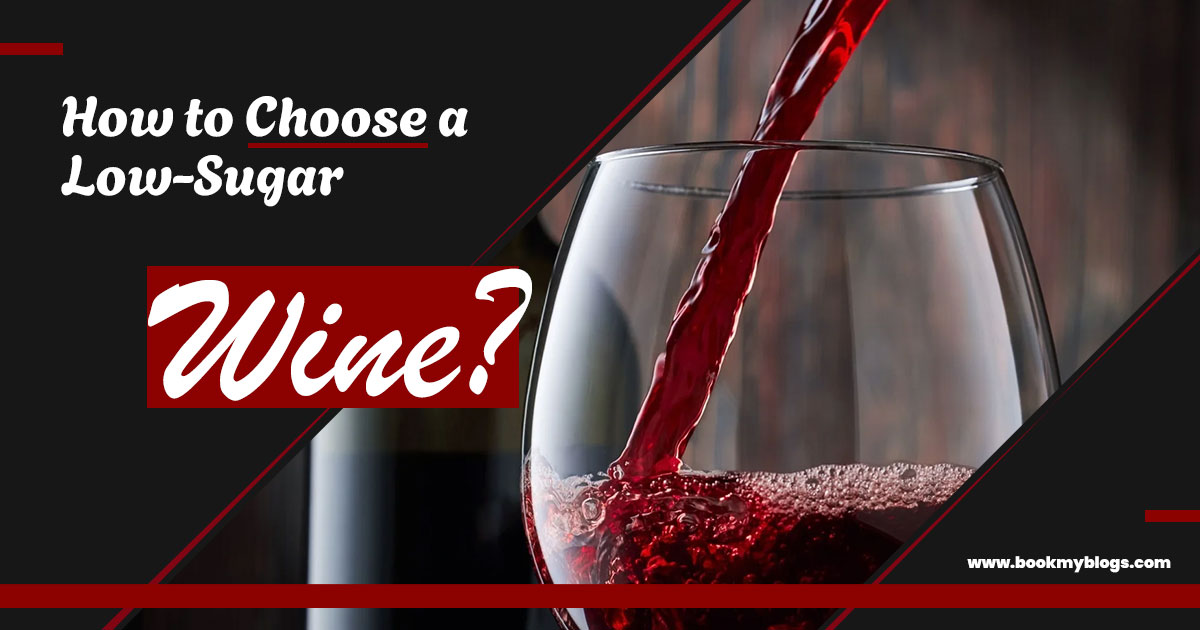In this winter season, lower your sugar consumption without compromising on taste. We will tell you everything about your favourite glass of wine. We will also help you to manage the sugar intake in your body. Here is the guide on how to choose a perfect glass of low sugar wine.
UNDERSTANDING YOUR SUGAR INTAKE:
We all know that sugar is a type of sweet carbohydrate that our body uses as fuel. Sugar is an essential element in wine. Ripped grapes contain sugars, and after fermentation, they turn to alcohol. In fruits, dairy, veggies and grains, there is a natural sugar with carbohydrates.
Consuming all types of meals is part of a healthy diet as they provide essential nutrients, minerals and vitamins. But in many processed foods today, the problem is that there is too much added sugar. Even those items we don’t think of as sugary, like bread, cured meats, condiments, soups and salad dressing.
Even if you try to control your sugar intake, these hidden sugars can make their way into your food. According to a survey in America, the average American consumes 77 grams of sugar. On one hand, women should not consume sugar more than 6 teaspoons (25 grams) per day. Whereas men should consume no more than 9 teaspoons (36 grams) per day.
Having too much sugar invites a variety of diseases, including diabetes, heart disease, high blood pressure, etc. Make sure you always read the ingredients of every food which you are going to consume. It’s best to have low sugar wine instead of high ones.
A GUIDE TO SUGAR LEVELS IN WINE:
We also have some good news for the wine lovers here. We know that there is no such thing as sugar free wine, but there are some low sugar wines which do not contain any added sugar. Usual Wines is one of them. They do not have any added sugars, chemicals, sulfites or additives.
There are several important factors that affect the sugar content in wine, including the grape’s harvesting and the time of fermentation. For example, varietals like Sémillon, Riesling and Chenin Blanc are often left on the vine longer (late-harvest), which results in a sweeter, riper and resinated wine grape which have more concentrated sugar levels.
Fermentation of grapes is another important factor that affects the sugar content in your favourite wine. Without this critical process, you will not have that booze! During the process, naturally occurring sugars are converted into ethyl alcohol and carbon dioxide (CO2). If fermentation is paused before all the sugars are converted into alcohol, the wine will be sugary with more residual sugar. And if the fermentation process is allowed to run without being halted, then the wine will be drier.
Many winemakers mix in other additives, such as preservatives (like sulfites) and sweeteners, during the fermentation process. Chaptalization is the process of adding sugar before or during the fermentation of wine, which is illegal in many regions.
TIPS FOR FINDING A LOW SUGAR WINE:
Not every winemaker is transparent about their method of producing low sugar wine and most of them also do not have any ingredient lists or nutrition facts like other drinks and food products. But there are some ways from which we can determine the sugar levels.
Here are some tips to help you shop smartly and choose low sugar wines-
- Don’t go for cheap wines, as they have more added sugars and other preservatives, too.
- Dessert wines have the highest sugar content, so forgo these.
- Skip higher sugar-level fortified wines like Madeira and Tawny Port.
- Avoid anything labelled “late harvest” (such as Riesling) as these generally indicate a sweet wine
- Whether it’s white wine or red wine, always go for the term “dry wine” in the description mentioned on the label.
- Avoid wines with “semi-sec”, “demi-sec,” or “dolce” on the label, as these indicate more sugar content.
- For Champagne, go for Extra Brut, Zero Brut or Brut Nature (the driest form).
- When selecting sparkling wine or Champagne, try to avoid “Doux,” which is the sweetest content. Opt for low sugar wines.
Conclusion
Along with the mentioned tips, it will help you to know which types of wine are naturally lower in sugar content. Remember that these are only general guidelines for you to choose a low sugar wine— it’s up to you to do some research about the winemaker and get as much information as possible about their wine production techniques.
Also Read About: How to Store Cilantro Hacks: Keep It Crisp and Green

